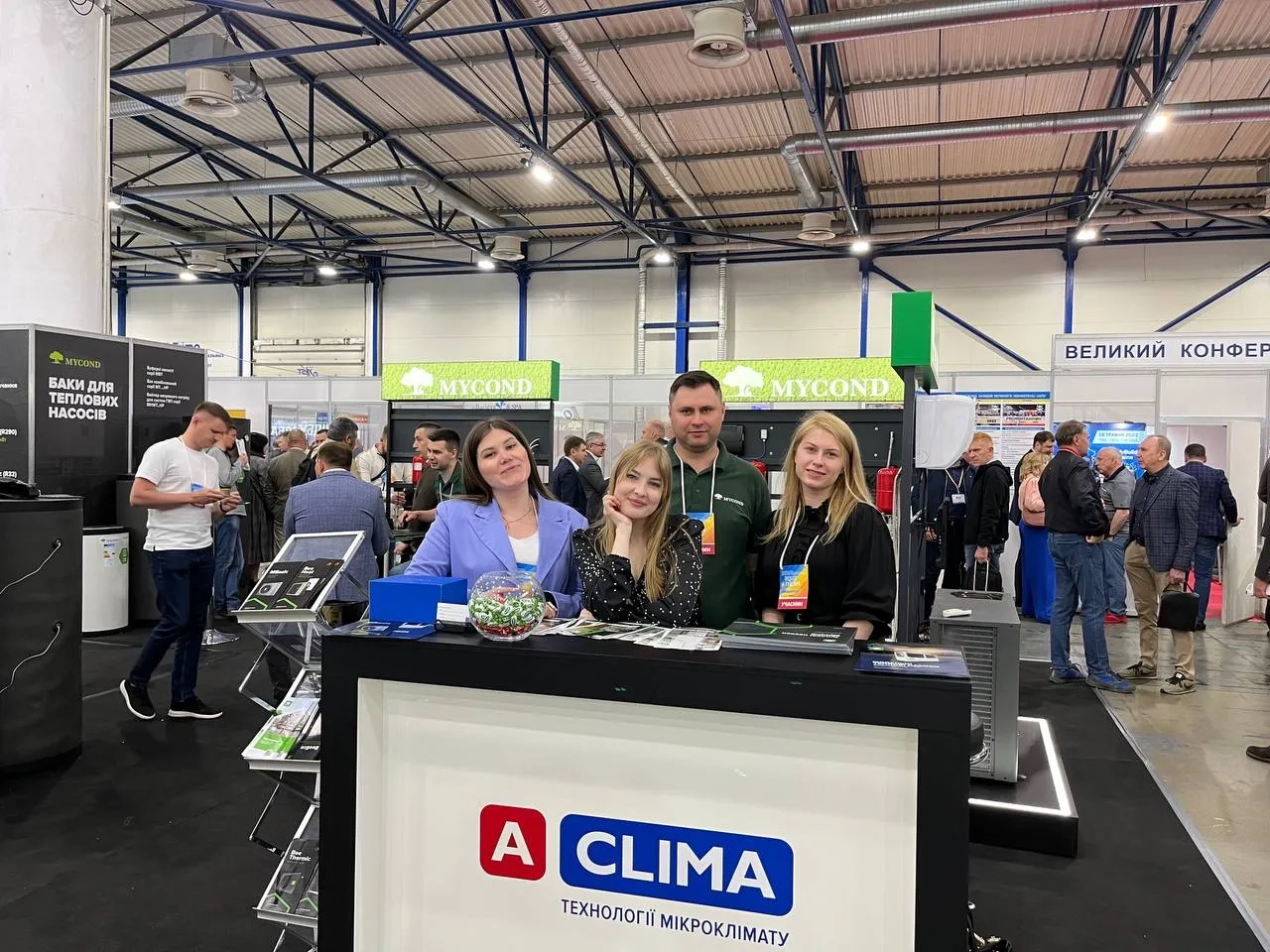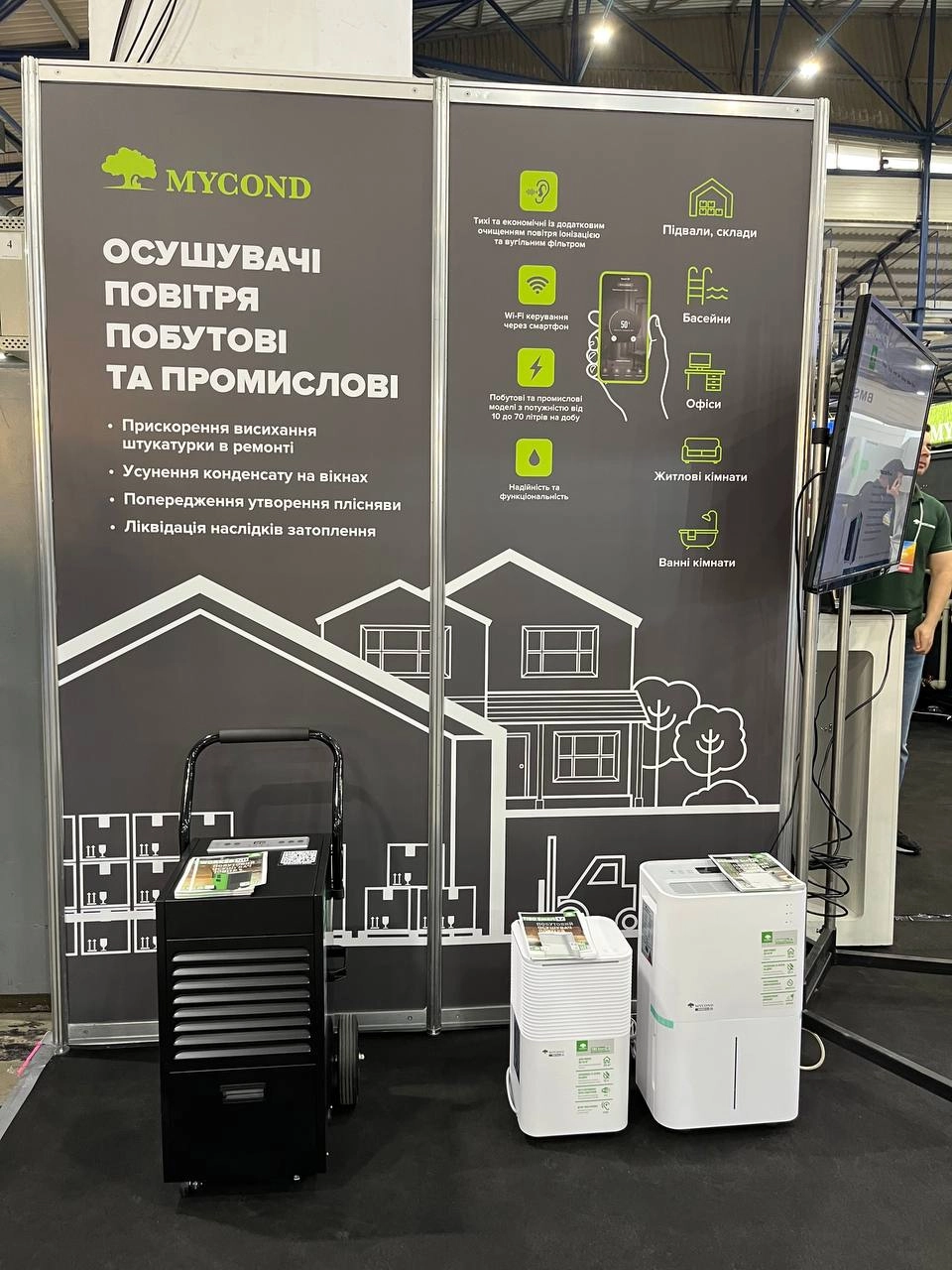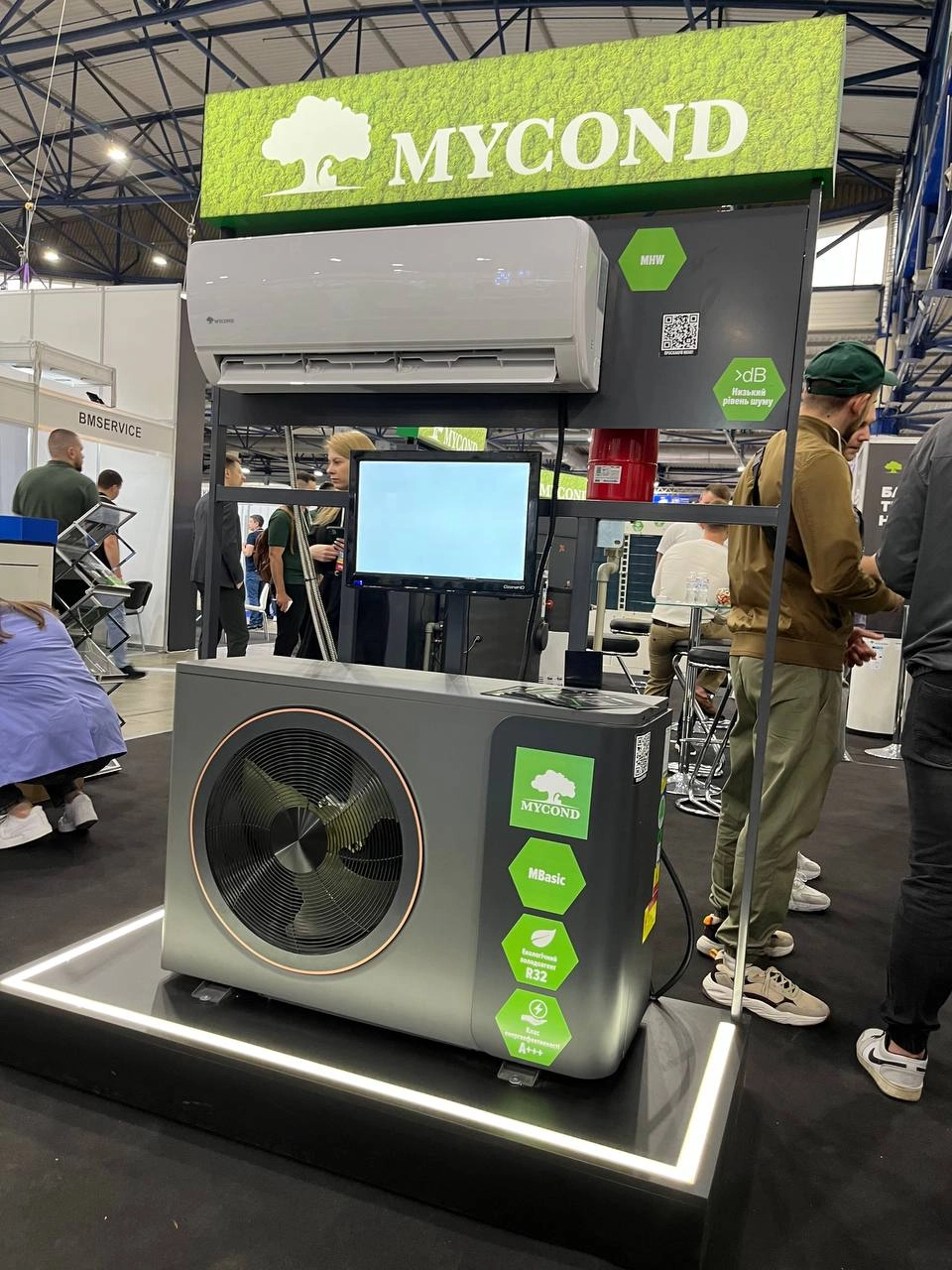
From 16th through 18th May, Aclima participated in the International Exhibition AquaTherm Kyiv 2023!
AquaTherm Kyiv 2023 is not only an exhibition, but also a unique platform for the exchange of experience, promoting development of engineering in Ukraine.
Let’s sum up the results at the end of the event.
During the three exciting days, we held interesting and useful seminars, where we presented the new powerful products from the British brand Mycond.



Our exhibition booth was comprised both of the new products and the most popular well-known equipment, including:
- New heat pumps of Bee series (BeeEco, BeeThermic, BeeSmart, BeeHeat).
- New fan coil units of Glass series (MC-SGW-400T2), as well as already famous models FHW, MHW, MCFS-075T2.
- Tanks of MBT 100, MBT 80, and MHWT 200 HP series.
- Combination tank MT 100/200 HP.
- Freeze protection system AFP.
- Modular heat pump MCU065YHI.
- Household and semi-industrial dehumidifiers.
- Automatic control panels.

Over these exciting days, we have held a number of interesting and useful seminars, where we presented new energy-efficient products from the British brand Mycond.
Oleksii Solomakha, our Mycond heat pump brand manager, has given two seminars, namely “Presentation of Mycond Bee heat pump series” and “Mycond monoblock heat pumps. Mycond modular chillers”.
In addition, Kostiantyn Kiptelii, our Haier CAC&LCAC manager and teacher at the Aclima Academy, gave a lecture for installers on May 18, entitled: “Installation of air conditioning systems: a service engineer’s point of view, or things they don't write about in books”.


The exhibition Aqua Therm 2023, held at the International Exhibition Centre in Kyiv, has been inspiring and left a lasting impression.
We thank the hosts of the venue that has brought together the largest engineering community in Ukraine, as well as all the participants for their enthusiasm and interest in heating and ventilation innovations.
During all the days of the exhibition, we witnessed fascinating presentations and demonstrations staged by unconquerable companies that brought along the most up-to-day innovations and engineering solutions.

This exhibition has been a wonderful platform to exchange ideas, learn about advanced technologies, and make new long-standing contacts.
We are looking forward to the future opportunities for cooperation and growth.
Together we build a better future!